Yesterday marked the beginning of spring in the northern hemisphere, and despite the cold overnight temperatures sunshine has helped warmed most recent days.
Even though I’ve mentioned many of these plants before, each spring I enjoy a reminder of the natural abundance surrounding us if we but choose to look. As I stepped outside, camera and journal in hand, I was still surprised by just how many wild edibles I found even though I’ve been foraging for years now.
This list represents just the wild food in my own suburban yard, plants which like growing in fields or disturbed areas. Many of these are “R-selected species” in ecological terms, meaning they are annuals or biennials that produce a lot of seeds to ensure their long term survival. More generally folks often call them “weeds”! As a side note, every member of this list was introduced to North America from elsewhere – mostly but not exclusively Europe and Asia – although many of them have been around for so long we forget they were ever a “foreign invasive”.
Burdock (Arctium minus)
Originally grown for edible roots, the flowering stems of the second year plants can be eaten as well. All parts of the plant can also be used for medicinal purposes as well. You would never guess from the tiny leaves in this photo how big the plant will eventually get!

Given the small size of these leaves, I suspect this is a first year rather than second year plant. Which means only the roots will be harvestable until next year when the plant flowers. When harvesting first year burdock roots, though, remember to leave a few plants for the following year’s crop of flowering stems!
(Most folks might know burdock as the plant whose seeds had the sharp hooks which stick to everything that brushes up against it, and led to the invention of Velcro!)
Chickweed (Stellaria media)
I know, I know, you are sick of me talking about chickweed! But I absolutely love it, and the flavors of spring it brings with it.
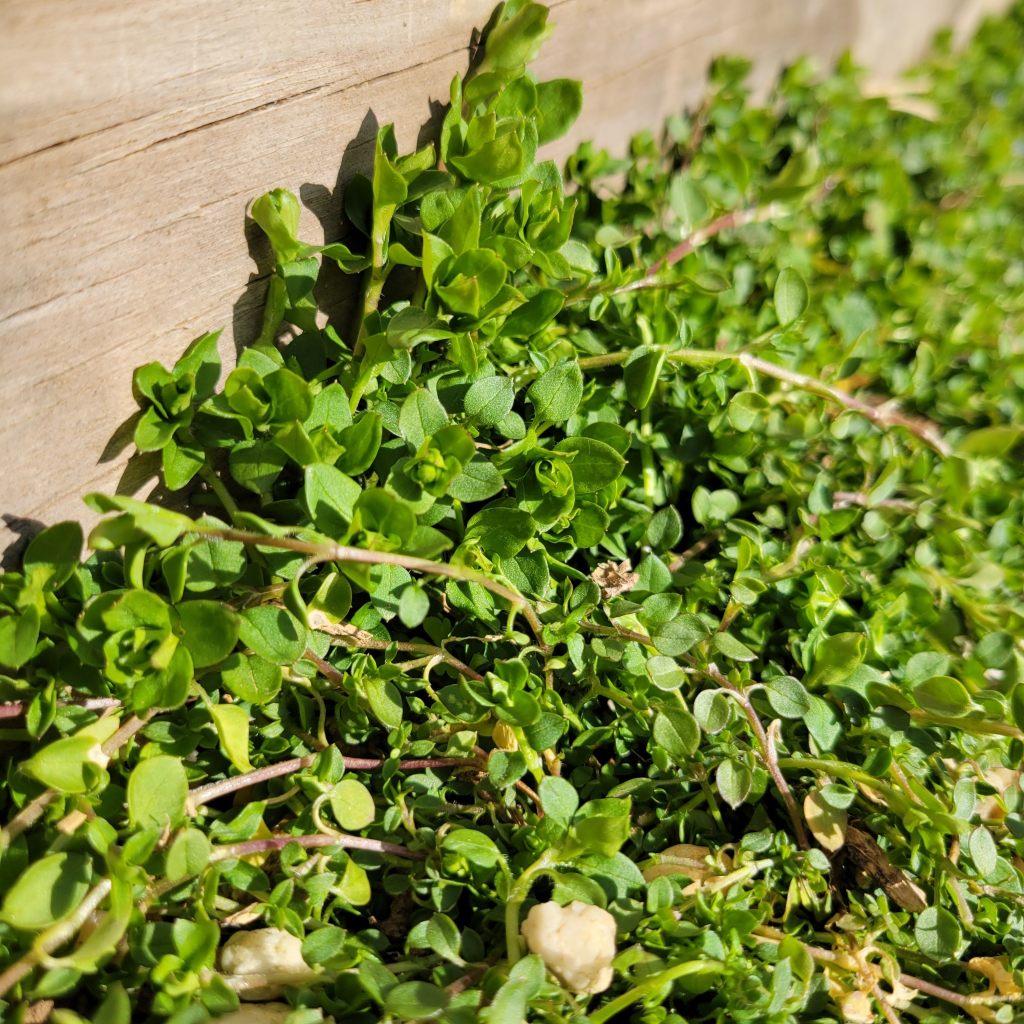
Chickweed is ubiquitous in my yard this time of year, growing in sunny spots and shade alike. Often where it isn’t wanted! When I pull it from the garden beds, if the leaves and stems are too small to make a decent salad, I toss them (roots and all) to my hens as a treat. They love chickweed almost as much as I do!
As with any wild edibles, remember to check the environment where the plants grow! Some of the prettiest chickweed in my yard grows too close to the industrial agricultural field that borders our property, which makes it not worth the risk in my book.
Creeping Charlie (Glechoma hederacea)
I only recently learned about creeping Charlie (also known as ground ivy), as it is not mentioned in my most consulted foraging books. It can be used as a salad green, cooked vegetable or flavoring for other foods – it was used to brew ale before the introduction of hops in the medieval period – as well as having medicinal uses.
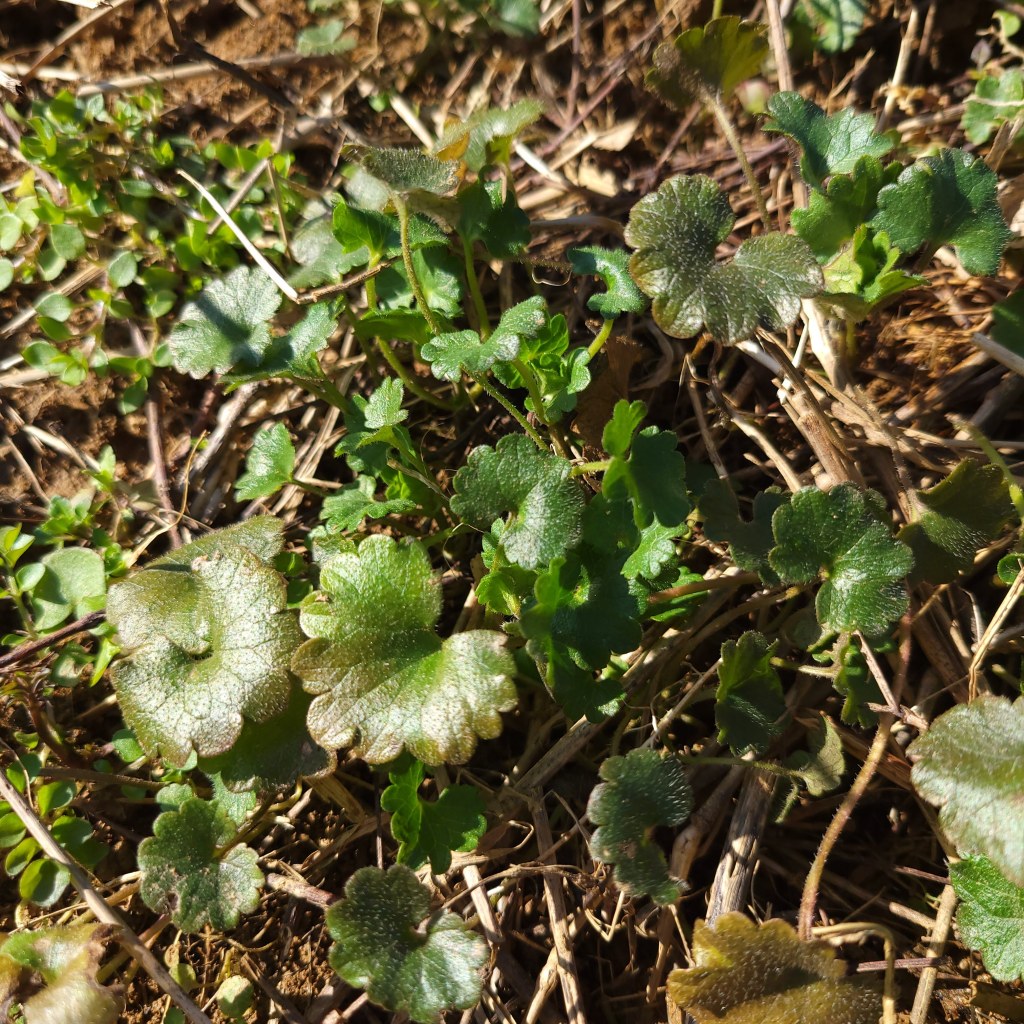
Like several other plants on this list, creeping Charlie is a member of the mint family (and considered by many a noxious weed).
Dandelion (Taraxacum officinale)
The most famous edible weed that folks love to hate!
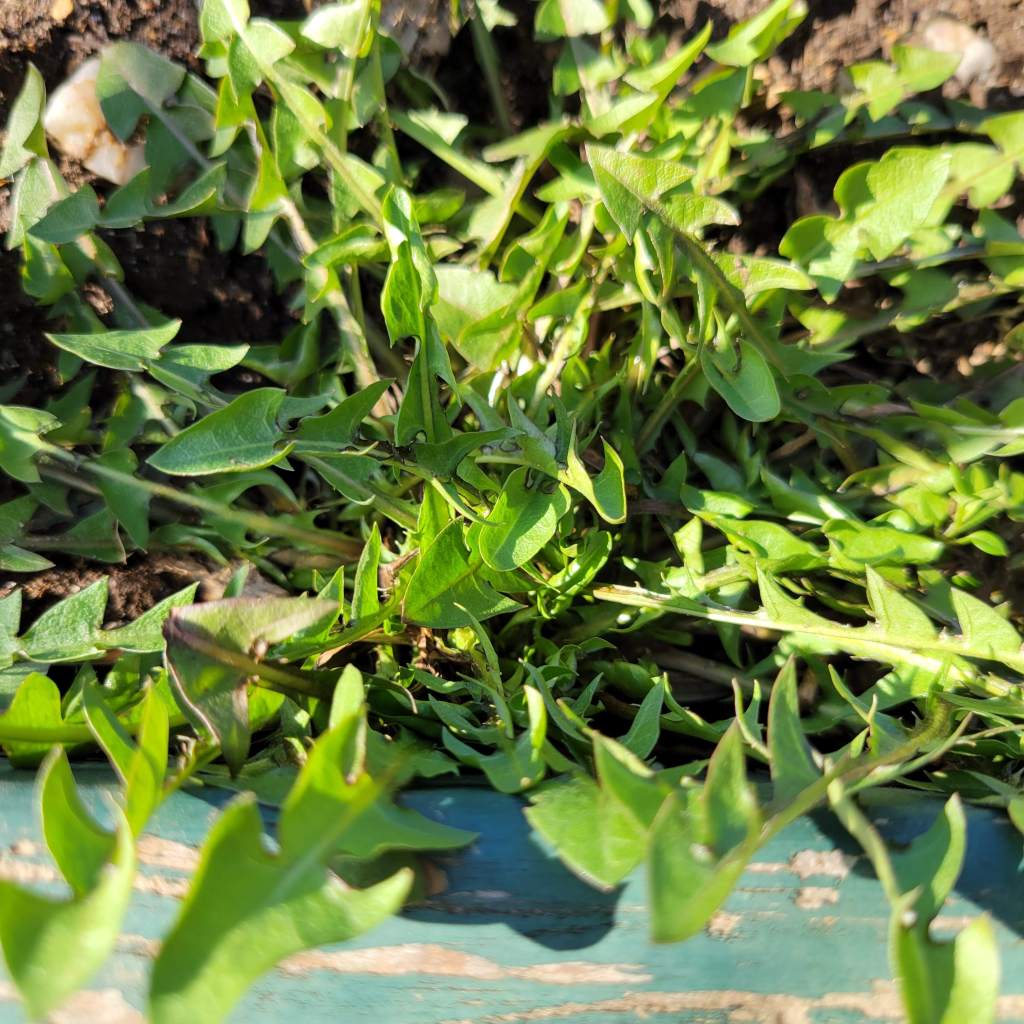
Early enough in spring, dandelion leaves can be eaten raw; look for the leaves that are yellowish-green and comparatively flexible when you bend them. This is the new growth. Older leaves – darker green and stiffer in texture – are better used in cooked preparations. With enough sun exposure, they may become so bitter that blanching is required to make the palatable, although this usually occurs later in the spring into summer. The roots are best in the fall; earlier in the year, the energy of the roots gets drained to spur the plants growth until the leaves take over.
Dock (Rumex spp.)
At this early stage, I can’t tell if this little plant is Rumex obtusifolius, broad-leaf or bitter dock, or Rumex crispus, curly dock. Both are possible here in central Maryland, though apparently curly dock has the better flavor of the two.
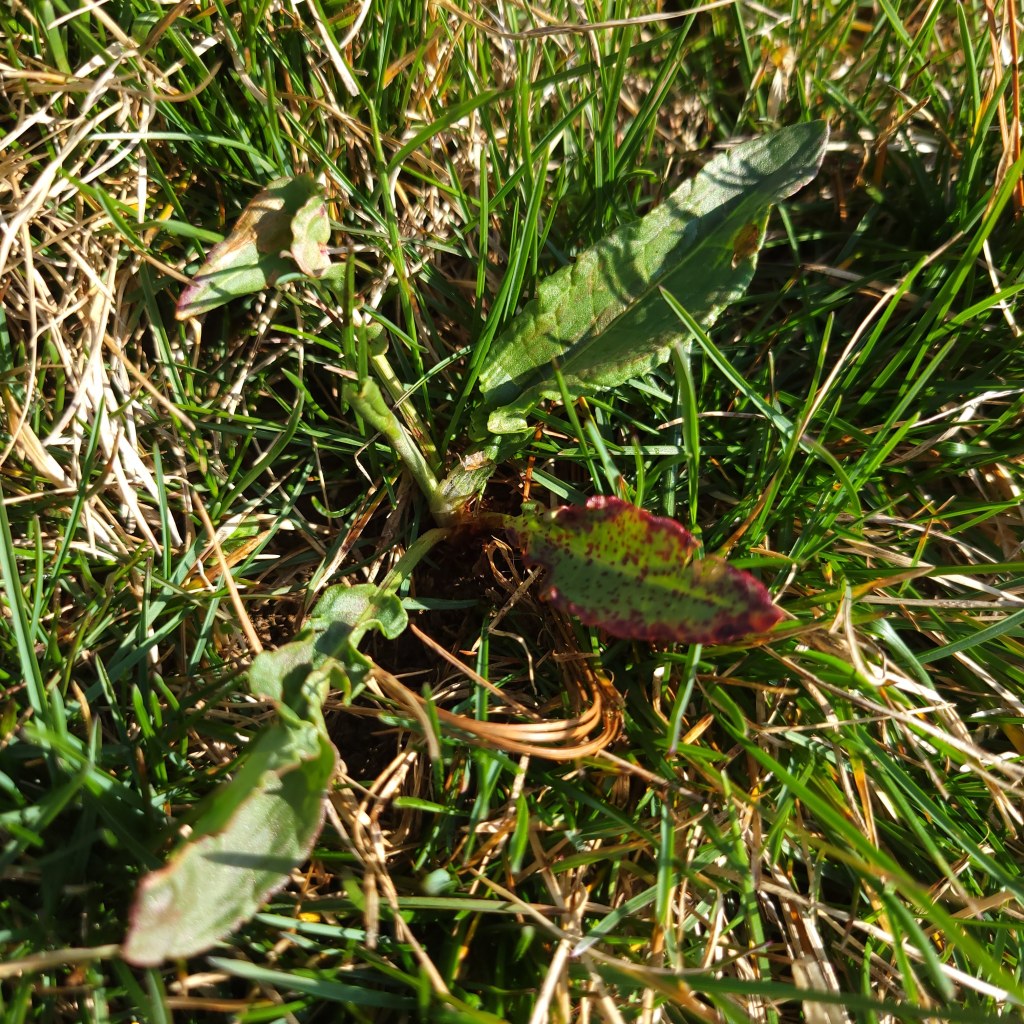
I haven’t mentioned dock much on this blog even though I’ve seen them in the area every year. The young leaves, flowering stalks and seeds are all edible. Maybe this will be the year I try dock – stay tuned for further updates!
Hairy Bittercress (Cardamine hirsuta)
A member of the mustard or crucifers family (Brassicaceae) which provides so much of our modern vegetable crops. Technically all members of the mustard family are edible, although not equally tasty.

While I haven’t had much fun eating hairy bittercress in the past, timing seems to be a factor as with so many plants. Generally speaking, once a plant has gone to flower it tends to be tougher and less pleasant to eat, which I think is what I have done wrong in the past.
Field Garlic (Allium vineale)
Field garlic is easy to spot this early in the year because the long, round leaves tower in clumps above the surrounding grass in lawns everywhere.

If you plan to harvest field garlic, use a long garden fork of the sort normally used to remove dandelions. And warn anyone else in your home who might care about the holes you could leave all through the lawn!
Because field garlic bulbs grow together so tightly, digging them up is easier following a soaking rain when the soil is moist. This can be muddy business though! Keep a bucket of water close by (I find leftover 2 quart yogurt containers perfect for this) to store the bulbs during the harvest to help remove the dirt and grit even more.
Garlic Mustard (Alliaria petiolata)
Given the fact that everything on this list is non-native, why do I harp so much on garlic mustard? It’s been a feature of the North American landscape since at least the 1800s. A biennial member of the mustard family, garlic mustard leaves and roots are edible at any age (although with varying degrees of palatability); in the second year the flowering stems, flowers with stem tips, and seeds are all edible as well.
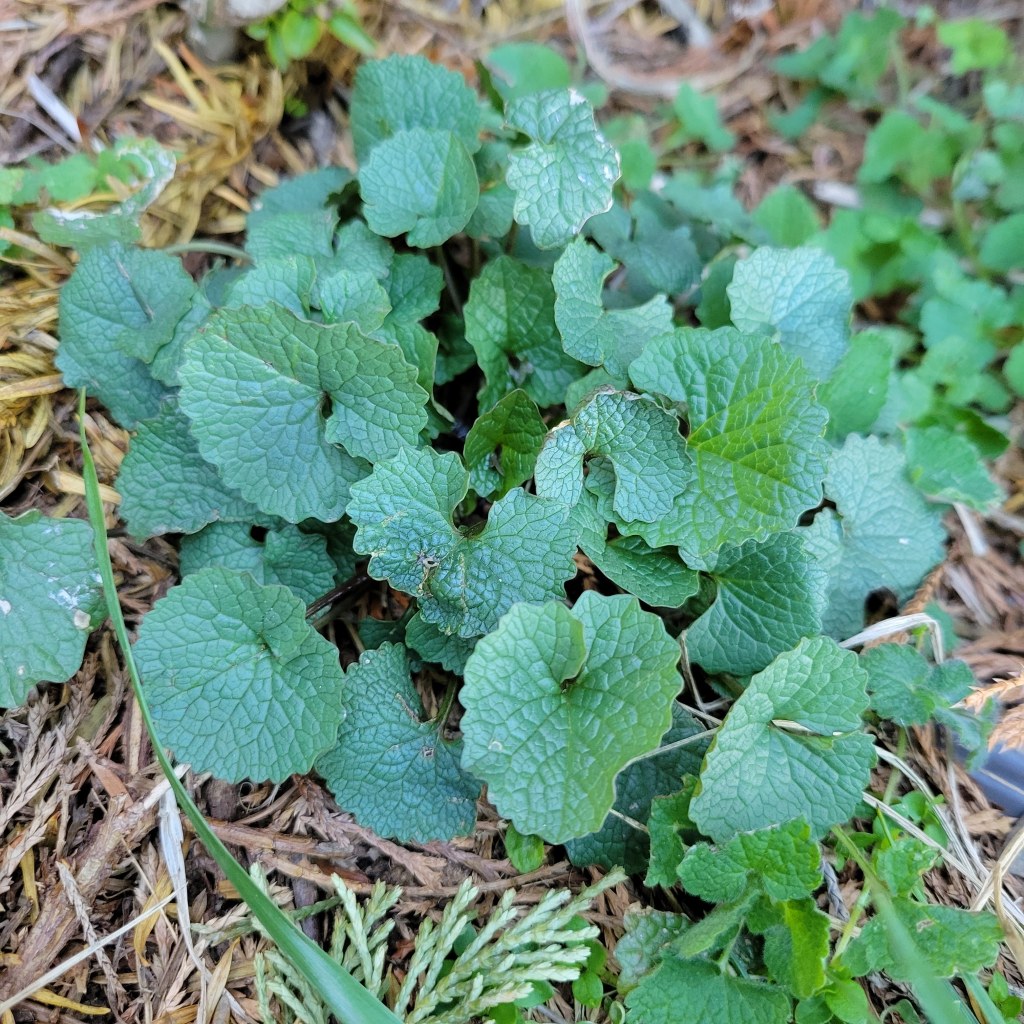
Garlic mustard grows equally well in full sun and shade. It has allelopathic effects on its surroundings, meaning it releases chemicals that suppress the growth of other plants. It has been moving increasingly into forests, displacing native species which are more temperamental about their habit.
While garlic mustard looks similar to other plants in this list (creeping Charlie in particular), you cannot mistake the garlicky smell that the leaves exude when they are crushed.
Henbit (Lamium amplexicaule)
Another member of the mint family like creeping Charlie and purple dead nettle. Mint family plants can always be confirmed because of the square cross-section of its stem. Young henbit leaves can be eaten raw and more mature leaves can be used in a variety of cooked preparations.

Because henbit isn’t one of the dominant greens in my yard, it plays a minor role in my foraging. Like chickweed, hens love it as a healthy snack so that is always an option as well if you need to remove some (from a garden plot for instance) but don’t have quite enough for a meal.
Johnny Jump Up (Viola tricolor)
I haven’t mentioned Johnny Jump Ups before, because in my world they aren’t truly wild but “feral”. I had planted them in my garden four years ago and they’ve been present in our landscape ever since. Once they go to seed, you are stuck with them! But Johnny Jump Ups are also known as wild pansies, so I’ve upgraded them to a foragable food. After all, part of the idea behind foraging is enjoying what nature offers without you having to cultivate the plant, and Johnny Jump Ups definitely fit that bill.

Johnny Jump Ups are the among the first flowers to greet spring – aside from dandelions, of course, which may bloom in the middle of winter. Like violets (see below), the edible flowers can be used raw in salads or candied to decorate baked goods.
Prickly lettuce (Lactuca serriola)
Not really edible in my book, because even at this young stage they more bitter than I care for. However they are a useful from a phenological perspective, telling us now is a good time to plant lettuce in a spring garden!
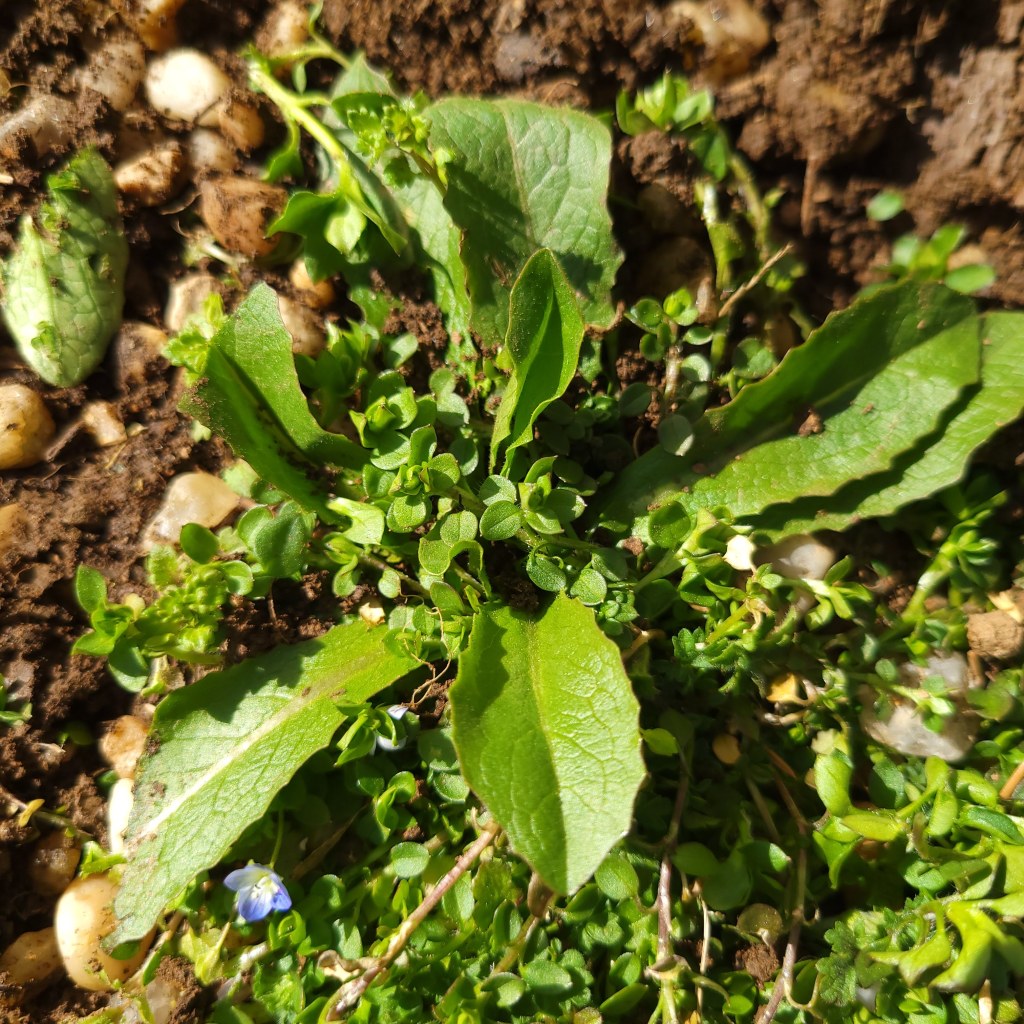
If you decide to harvest prickly lettuce, remember to check for the line of hairs along the bottom of the leaf’s rib – this is a distinguishing feature of all wild lettuces, not just L. serriola.
Purple Dead Nettle (Lamium purpureum)
After chickweed, purple dead nettle is the most common “weed” in my yard at this time of year. I used to carefully pick the leaves from the stem for cooked dishes, but now I just harvest and chop the tips of the plant. Unlike many wild edibles (or domesticated plants, for that matter), the stems and leaves do not become tough or bitter when the plant flowers, so the whole top section can be harvested to eat.
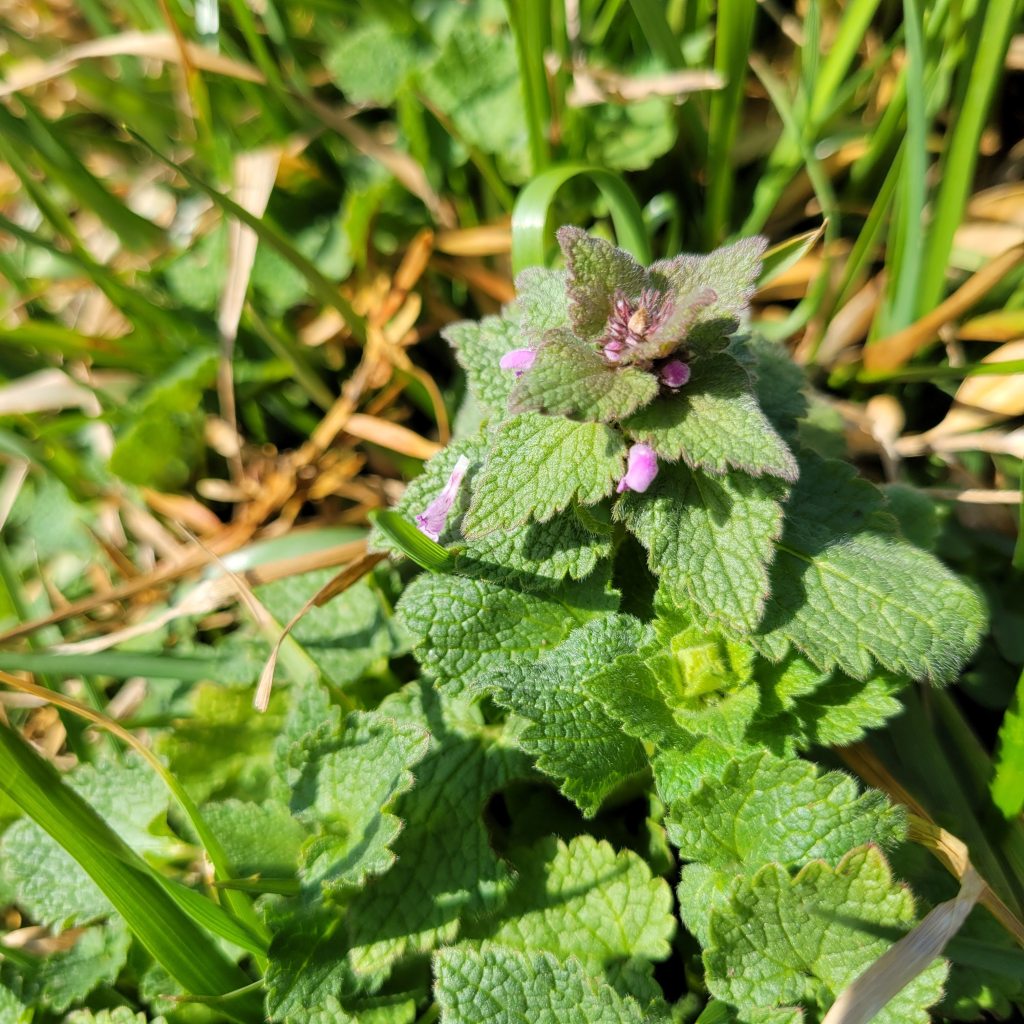
Because it is so abundant this time of year, purple dead nettle is my go-to cooking green (like how chickweed is my default option for raw consumption). Because the flavor is mild, I will sometimes add a more flavorful vegetable (like garlic mustard) in a much smaller quantity to keep the dish interesting.
Queen Anne’s Lace (Daucus carota)
I haven’t had much luck foraging wild carrots, aka Queen Anne’s lace, because I usually do not notice them until they have gone to flower! At which point the roots are too tough to eat.
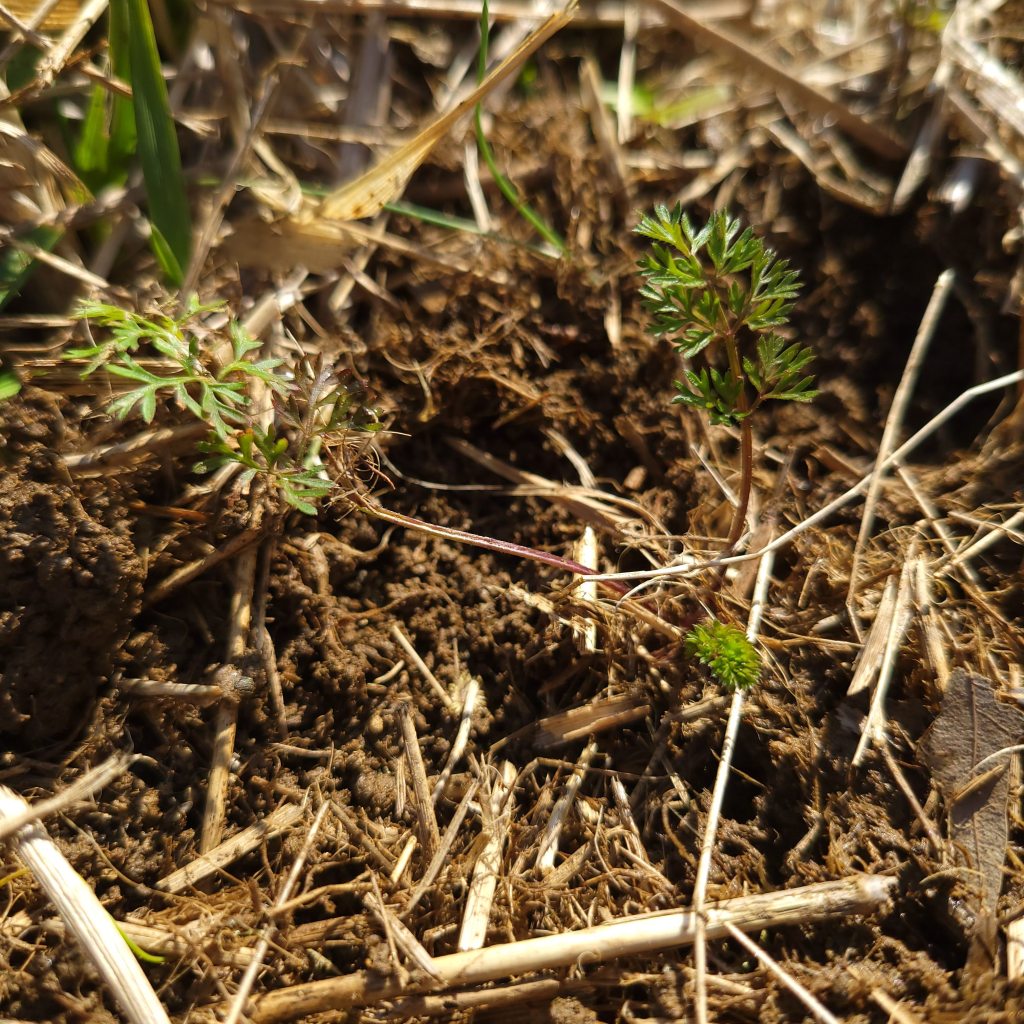
These little guys are small enough they are probably first-year seedlings rather than overwintered plants ready to send up a flowering stalk once the weather warms to summer. If the ground is warm enough for them, it will be warm enough in your garden beds as well – time to plant domesticated carrots as well!
Sheep Sorrel (Rumex acetosella)
Sheep sorrel, is a member of the buckwheat family like dock, even though they look nothing alike! Later in the year as the leaves get larger, they will vaguely resemble a sheep’s face, which is where it got the name. Even in this early time of year, sheep sorrel has a pronounced, pleasant sour flavor when you munch on a raw leaf.

I primarily use sheep sorrel to provide a sour, almost lemony flavor to other foods. For instance it makes a very tasty compound butter with field garlic! You can also steep it in hot water for tea; chilled with added sweetener it can make a substitute for lemonade.
Violet (Viola odorata)
Late March appears to still be early for violet, which normally pops up everywhere in our yard. I enjoy violet primarily as an addition to a salad of mixed greens.
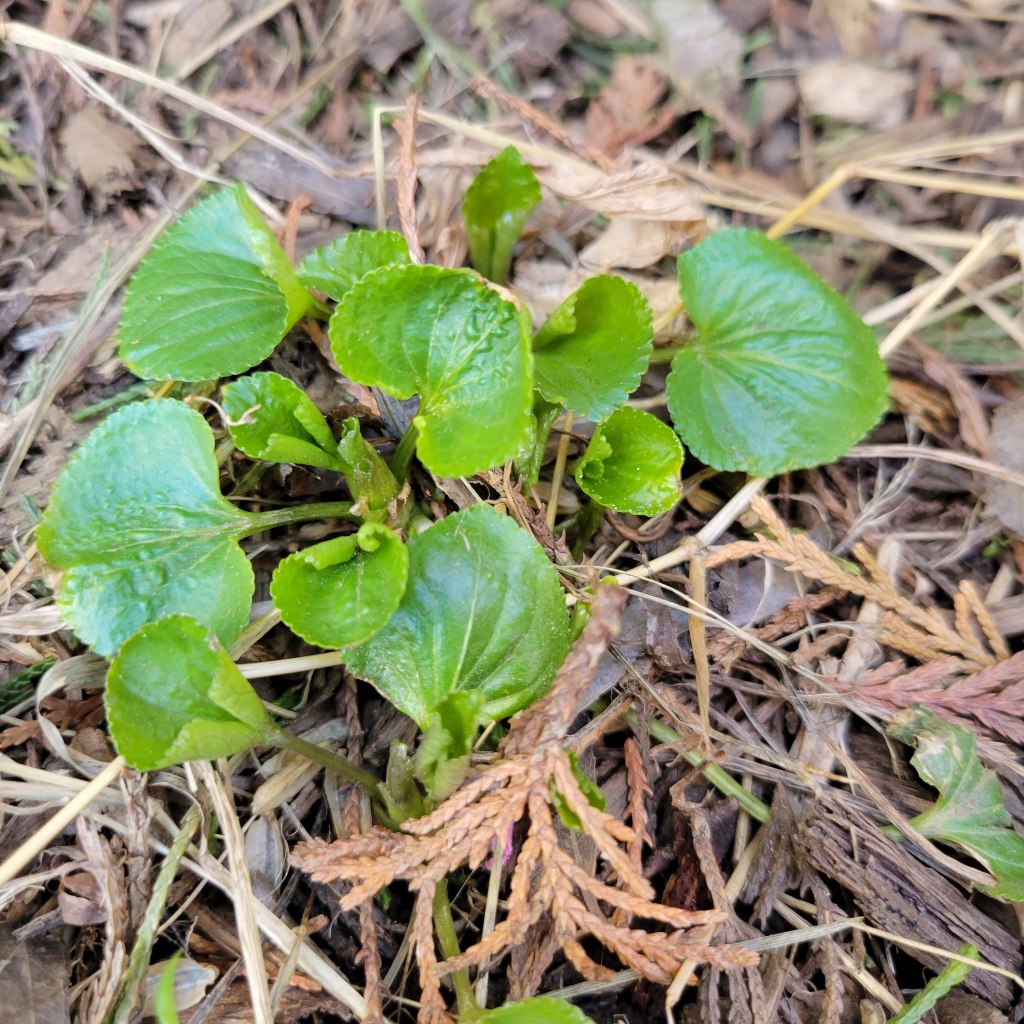
Once they flower, you can harvest violet’s edible purple and white blossoms for salad garnishing, candied decorations (see for example here) or violet syrup (another recipe, from the same website). I haven’t tried either candied violets or syrup, since I’m trying to minimize my sugar intake, but maybe at some point I will give them a shot!
Wintercress (Barbarea vulgaris)
I’m literally the only person in my house who enjoys the sharp flavors of wintercress, also known as yellow rocket. I snack on it raw when I find a patch growing in my yard! The flavor is similar to arugula… which is similarly not very popular in this house!

Because of its strong flavor, wintercress is best mixed with other, milder-flavored greens whether raw in salads or cooked as a side-dish. In addition, this wild mustard, like the carrots and lettuce, remind us that now is the time to plant spring garden crops! Crops that my family will actually eat, versus the vibrant, peppery or bitter flavors of their wild cousins.
What is growing in your neck of the woods – wild or otherwise – now that it is officially spring?